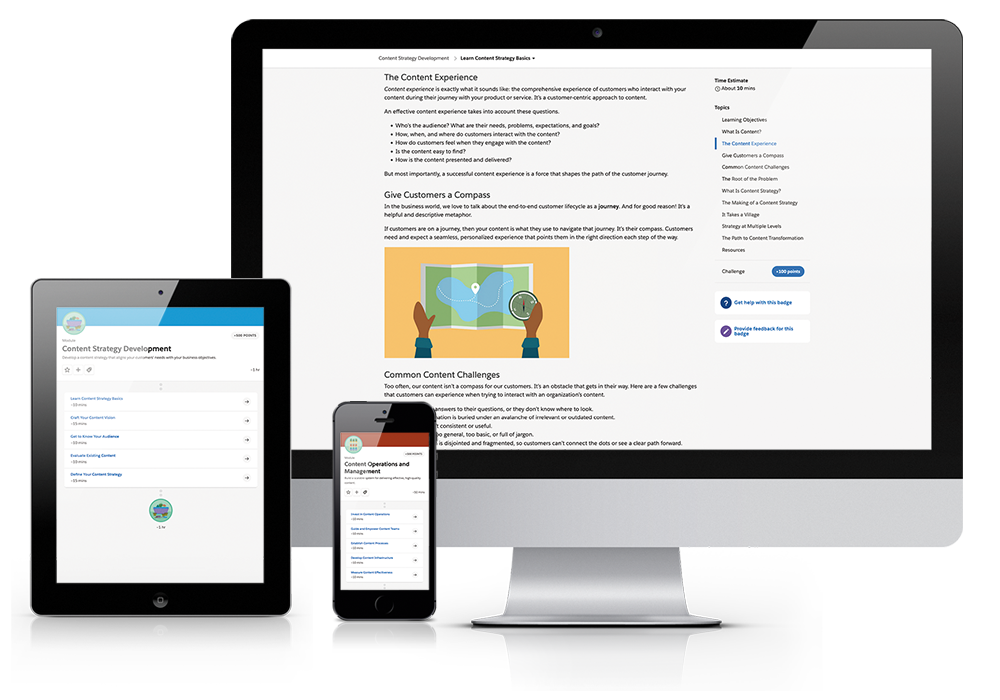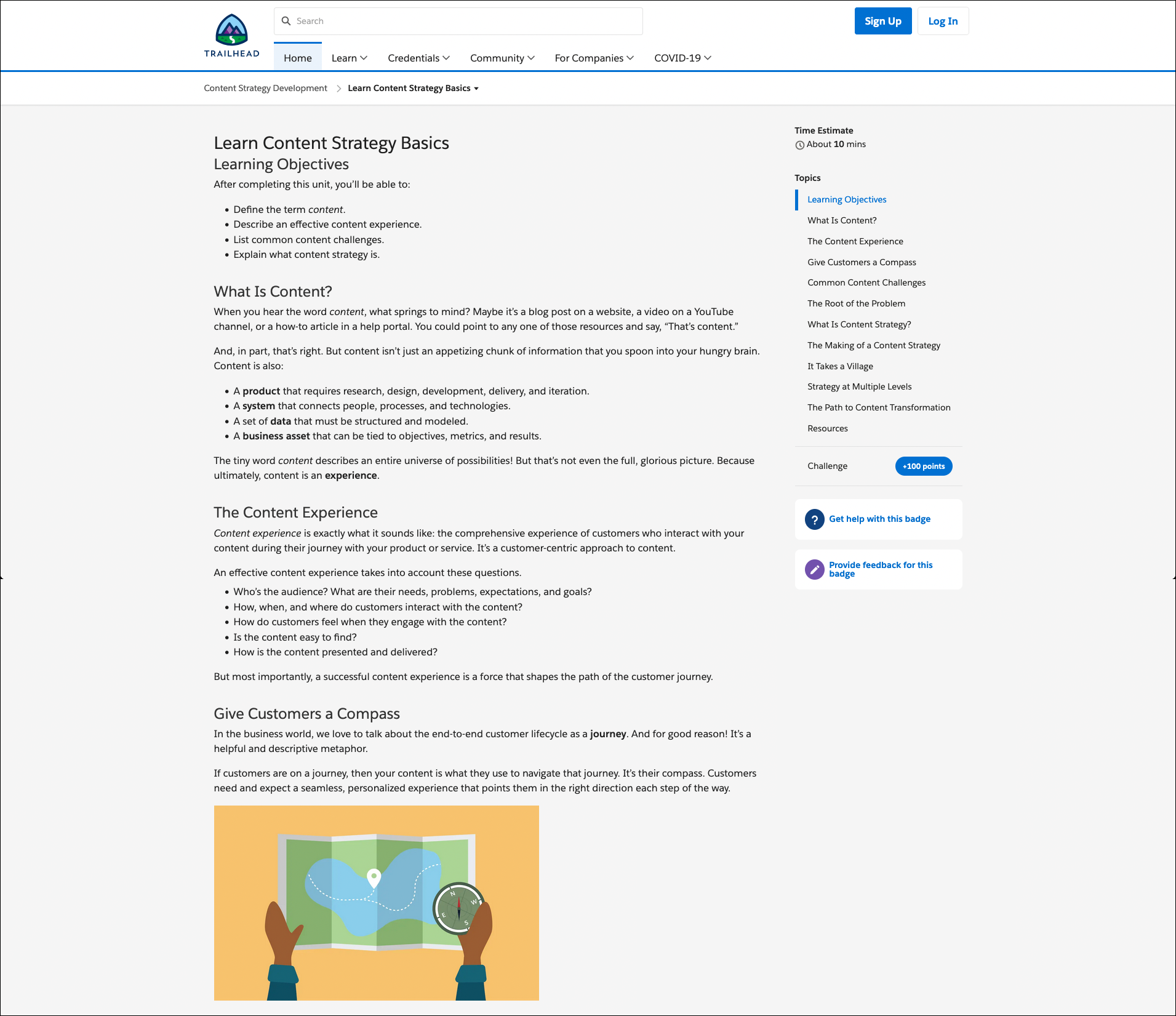
Content strategy is hard. Teaching content strategy is even harder. In 2020, the Content Experience team at Salesforce asked me to create a self-paced online training program that helps students learn how to develop and execute a successful content strategy.
The team planned to publish the training modules to Trailhead, which is Salesforce’s free online learning platform with over 3 million subscribers.
There were two main audiences for the content strategy training program: internal and external.
The Salesforce Content Experience team had a business objective for the training program. Establishing a curriculum for learning content strategy processes and best practices would improve the quality and consistency of the team’s content. It would also ensure that content strategists on the team were better equipped to deliver well-crafted content experiences and meet the needs of customers at every stage of their journey.
I was responsible for the following roles on this project:
This project was quite important to me. I started my career in the early 2000s as a teacher, instructional designer, and software trainer, and I’ve always had a passion for education. During this project, it was fulfilling to combine my teaching experience and deep content knowledge to evangelize the value of content strategy and help others uplevel their content skills.
I produced a comprehensive curriculum for content strategy development that included the following deliverables:
The training modules were published to Trailhead in February 2021. The Content Experience team at Salesforce now uses the modules as required onboarding training for content strategists who join the team.
“This curriculum is incredibly well conceived and written. I love it. It’s going to be an extremely effective tool for both employees and customers. Great work, as always. You really nailed the articulation of what content strategy is and why it’s necessary.” —Phil Choi, VP of Content Experience
If you’d like to see the entire curriculum or read the content, feel free to visit the modules on Trailhead:
Note: You don’t need to create a Trailhead account to read the content. When prompted, just click the link that says, “Skip for now.”

I began this project with a thorough phase of research. I researched the subject matter, as well as the storyline and learning scenario for the training modules.
Content Strategy Research
To create the content strategy curriculum, I drew upon the following resources:
Storyline Research
Trailhead uses playful storytelling and its very own cast of characters to bring instruction to life. In the training module, it was important to introduce a storyline that follows along with a character as she develops a content strategy for her company. The goal was to inspire learners with a real-world example and prevent the material from seeming too academic.
From Trailhead’s cast of fictional characters and companies, I had to come up with a learning scenario about content strategy. The fictional company that offered the best storyline was Ursa Major, a solar business. But how would I write convincingly about the business goals and content challenges of a company from a totally unfamiliar industry?
Through the Salesforce UX team, I connected with two Salesforce customers in the solar business. I conducted several research interviews to learn more about the solar industry, their company’s business objectives, their personas and customer journeys, and their approach to content. Parts of the storyline were inspired by that research.
After a few weeks of research, I synthesized and organized all of my ideas and notes about content strategy. I envisioned a two-part curriculum. The first training module would teach learners how to develop a strategy that guides all of their organization’s content efforts. The second module would teach them how to execute that strategy in a repeatable, scalable way.
Module 1: Content Strategy Development
Module 2: Content Operations and Management
With the high-level structure in place, I then created the full curriculum, learning objectives, and lesson outlines. After a round of feedback from stakeholders and experts, I was ready to start writing.
Trailhead is a fun learning platform that features bite-sized, conversational content to make it easy for students to learn complex topics, so it was important to present and write about content strategy in a friendly, approachable way.
Another factor during the writing process was that content strategy is obviously a huge topic. My main challenge was wrangling the massive amount of material and striking a balance between “too much information” and “not enough.”
The learning objectives were my guiding star. I included just the right amount of information to ensure the desired learning outcomes. And for students inspired to learn more beyond what’s provided in the introductory curriculum, I included helpful links to supplementary resources.
After the writing stage, it was time for the finishing touches.